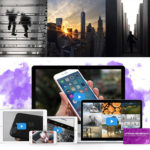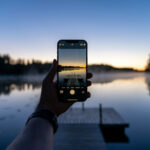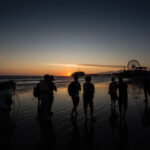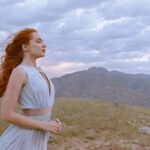When working on a timelapse, you make a lot of decisions. You have to consider shutter speed, aperture, ISO, time of day, and various other preferences. While there are no right or wrong answers, you have to know the end result you’re trying to achieve. Each choice you make—no matter how big or small—determines the overall outcome of your timelapse. For instance, when working with water, before you decide on your shutter speed, you need to think about how you want your water to look. Are you looking to create something fluid and dreamy, or are you trying to capture something more choppy and angry? In this helpful tutorial, commercial photographer Jay P. Morgan shows how to use shutter speed to control the water when shooting a timelapse:
Using a mannequin and an umbrella, Morgan sets the scene in his backyard to showcase how the effects of water change with your shutter speed when shooting a timelapse. In the first take, he uses a short shutter speed of 1/2500 of a second. This creates a lot of short and angry movements in the water, and the rain itself looks more like snow than water due to its frozen and defined feel.

ISO 640, 1/2500 second, f/2.8, 1-stop ND filter
When capturing the long exposure timelapse, Morgan uses 1/20 of a second. This image shows a lot of movement and provides the viewer with a feel for the motion in the water. The slight blur to the water creates a smoother transition between frames and is better for those looking for a more cinematic feel.

ISO 100, 1/20 second, f/2.8, 8-stop ND filter
When working outside, it is important to remember long exposures can be extremely difficult, or even impossible without the help of a Neutral Density (ND) filter. This special little tool is perhaps one of the most overlooked and undervalued tools in photography. Its sole purpose is to reduce the amount of light that gets into your camera, and it comes in a variety of styles and intensities to match whatever you’re looking for.
“If you’re doing timelapse, you really need a ND filter. As the sun goes down and it gets darker, then you can get those long exposures without a ND filter, but during the daytime, you gotta have them.”
Like This Article?
Don't Miss The Next One!
Join over 100,000 photographers of all experience levels who receive our free photography tips and articles to stay current:






Leave a Reply